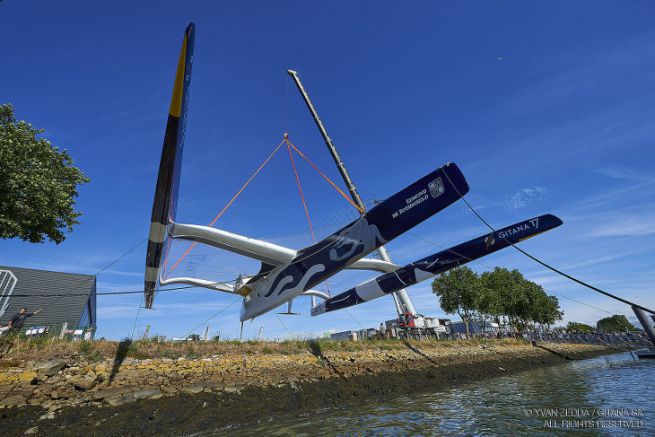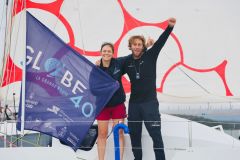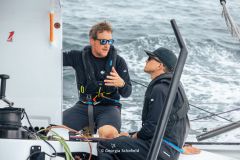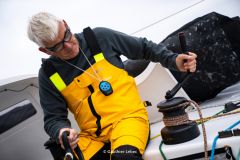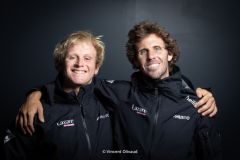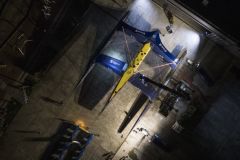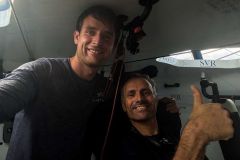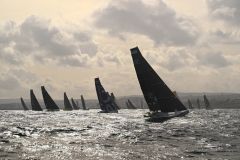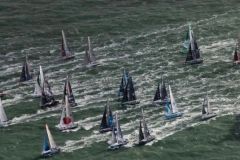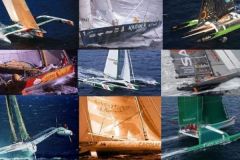Successful launch
The Maxi Edmond de Rothschild was launched in Vannes on Monday 17th July 2017, before the eyes of the whole Gitana Team. Under construction for 20 months, Gitana 17 (her christening name) will be the first ocean-going trimaran designed to fly offshore. To this end, her appendages are all fitted with lifts, even the central daggerboard. It was the French architect Guillaume Verdier who designed this new prototype. He, who has just won the America's Cup with the New Zealanders, was also the initiator of the hydrofoil monohulls in the last Vendée Globe.
The Maxi Edmond de Rothschild will therefore be at the link between the world of ocean racing and that of hydrofoil sailing, practiced mainly in the bay, as in the America's Cup in particular.
After her launch, the trimaran has reached Lorient to receive her 35-metre spar, which will carry up to 650 m2 of canvas. In the coming weeks, the load resistance tests, the sailing and the first flights will follow one after the other.
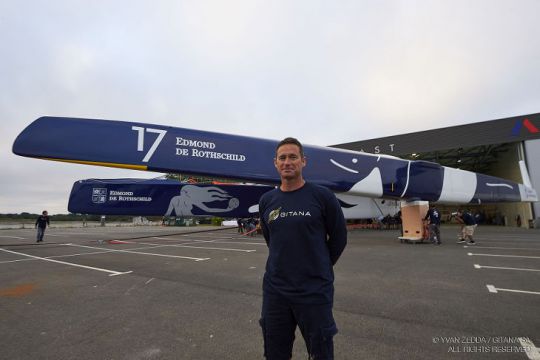
For his first sail, Sébastien Josse, in the company of Thomas Rouxel, will set off on the Transat Jacques Vabre, between Le Havre and Salvador de Bahia in Brazil. He will then take part in the Route du Rhum (2018) and then in the first single-handed round the world race created for these ultimate multihulls (2019).
"I'm obviously very impatient, but I'm keeping a low profile and I'm very impressed with the work of the whole team. We won't be sailing the same whether single-handed or with a crew, nor in records or races. The records are now being broken by teams who have been working on them for a long time. There's a lot of unknowns, a lot of things are being tried here for the first time. We're going to have to go crescendo, meet each other with this boat, listen to each other to understand each other. The round the world race in 2019 will, in due course, bring the pressure of the competition, which will fascinate us with not only the technological part, but of course an incredible human adventure in a pioneering atmosphere" said Sebastien Josse.
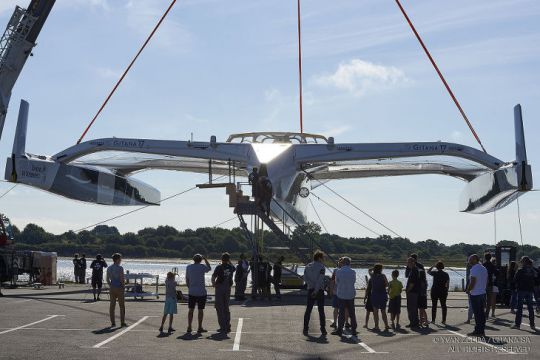
The first ocean-going ship capable of flying
The construction of the maxi-trimaran will have required 170,000 hours of work and 20 months of construction. She is 32 m long and 23 m wide and has an air draught of 37 m. The very objective of this maxi-trimaran is to be a "two-in-one" and to be able to literally fly. Thus, it has 6 load-bearing appendages: L-shaped foils 5 metres high with a wingspan of almost 3 - the largest ever built - retractable T rudders which act as a lift to get the boat off the ground.
The use of huge L-shaped foils and T-shaped rudders means height for the floats and maximum stiffness for the platform. The arms connected to the central hull are rectangular - not curved - in order to optimize the rigidité?. These straight arms are streamlined like aircraft wings to add aerodynamic effect.

"Ten years ago, we were wondering about the size of the headsail furling systems, how much force the winches could take, whether you put jacks for certain functions or tilting on the mast. Today, we no longer ask these questions, but we wonder what angle to give to the flaps (like the flaps on aircraft wings), what type, what wingspan? We ask ourselves new questions about new things. It's an offshore boat designed as a small foiler and it has almost all the functions of an America's Cup boat. It's the beginning of a long discovery, we're opening up a way forward, with a boat that has the potential to fly offshore, now it's about doing it" explains Pierre Tissier, technical director of the Gitana Team.
The Maxi Edmond de Rothschild is designed for single-handed sailing but will also suit the crew and without being modular. Solo, Sébastien Josse will use the deck with the command centre and the living area, whilst in crewed configuration, the central hull will serve as a living area for all the crew.
Profiled to reduce dunnage and stay within the aerodynamic character of the boat, the cap attached to the central hull creates a very protected living cell. The skipper will spend all his time in it when sailing single-handed and, when sailing with a crew, bunks are provided underneath, inside the central hull.
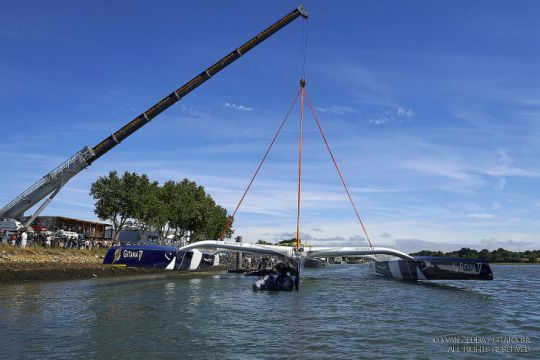
As on the America's Cup units, the Maxi Edmond de Rothschild is doté? of three flat-bottomed, inverted-bow gliding hulls, to increase the ability to fly and ensure excellent stability in heavy seas. The central hull and floats are high freeboard for better sea keeping.
"The original idea was to design the first ocean-going boat capable of flying with rock-solid reliability. There are risers on all the appendages. The daggerboard also has a skate-wing shaped support plane to gain even more stability when heeling and rolling. This means a lot of adjustment points for Sébastien (Josse). We're going to have to go step by step, know how to be reasonable enough, and also know what to do when the seas get too rough. There were 80 of us at Team New Zealand to answer these questions. So we're going to have to be patient and talk to each other a lot to reveal the boat's potential details Guillaume Verdier.
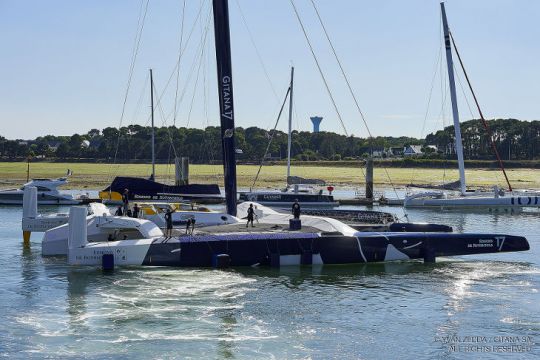

 /
/ 